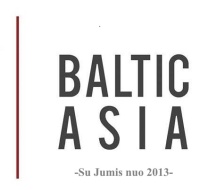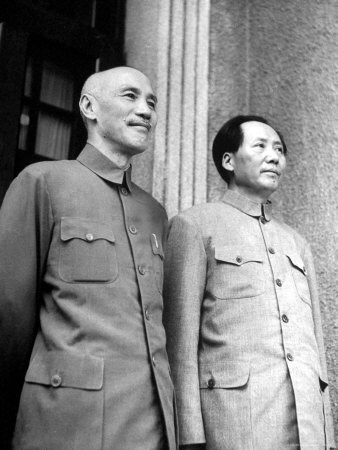The ambiguous political status of Taiwan (R.O.C. – Republic of China) can drive anyone crazy. Is it a part of China? Is it an independent country? Is it China itself? BalticAsia member Nina, currently living in Taiwan, suggests to take an express-class on Taiwanese history to figure it out.
The Island
The first inhabitants of the island were people of Malay-Polynesian descent, who lived happily for centuries. Starting from the 14th century there was a large immigration wave of Hakka people from the mainland China, fleeing from the unbearable hardships and taxes. In 16th century, the Portuguese discovered the beautiful island and called it Isla Formosa, which literally means Beautiful Island. The Portuguese, however, weren’t too lucky colonizing it, so their fellow-Dutchmen took the initiative and colonized Formosa instead. A couple of decades later a Chinese military leader Koxinga came to Taiwan to get rid of the Dutch people and claimed Formosa to be a part of China. China wasn’t particularly interested in ruling Taiwan though: they had enough fun activities back at home, like dealing with countless uprisings and rebellions, or fighting the Japanese, for example. After the first Sino-Japanese war, China was more than willing to give Taiwan to Japan, so in 1895 Taiwan became a part of the Japanese Empire for the next 50 years. Since then it went through rapid industrialization as well as a tremendous economic progress, thanks to Japanese insatiable hunger for warfare.
Summary: Indigenous people – Hakka immigration – Europeans – China – Japan.
The Mainland
With the beginning of the 20th century, however, things got a little bit more complicated. In 1911, the dynastic rule in China ceased to exist, and the Republic of China (ROC) was established. It led to the outbreak of a civil war for more than two decades between the nationalist Kuomintang (KMT) under Chiang Kai-shek and the communists under Mao Zedong. They unified for a short period time against the Japanese, and both proclaimed their determination to help Korea and Taiwan in their struggle for independence. At the time, the Allies were afraid of two things: rapid spread of communism in the region (thanks to Mao), and the possibility of Chiang Kai-shek signing a non-aggression pact with the Japanese. So in 1943 the Allies promised KMT government temporary administrative control over Taiwan on the Allied powers behalf. In1949, communists took over China and established People’s Republic of China (PRC). KMT fled to Taiwan and took with themselves the old name – Republic of China (ROC). The temporary control soon became a permanent one. And that is the story how since 1949 the world has 2 Chinas – PRC on the mainland and ROC on the island.
Summary: End of dynasty rule – Communists and Allies – Chiang Kai-shek vs Mao Zedong – PRC (Mainland) vs ROC (Taiwan)
The Island Again
When Chiang Kai-shek and co. first arrived to Taiwan, they chose to do the only reasonable thing any oppressing regime would do: they forbade public use of local Taiwanese languages, persecuted people with contrasting political opinions, controlled the media, and convinced (ethnically different) Taiwanese people that they were, actually, Chinese. For 38 years, Taiwan lived under the longest in the world history martial law. This period was unofficially called “The White Terror”. In 1970s, most of the countries broke their diplomatic relations with Taiwan and established them with Beijing instead, due its growing geopolitical importance. In the late 1980’s, however, the martial law was lifted after the numerous protests against KMT government. And in 1990’s Taiwan was finally ready to make its first steps towards democratiztion and re-discovery of its identity. Now it is rapidly moving forward, and the question of independence is becoming more and more acute.
Summary: Martial Law – White Terror – Martial Law Ends – Democratization
The Outer World
Currently about 22 countries recognize Taiwan as an independent state, most of them are located in Central America and Africa. Not a single European or Asian country fully acknowledges the sovereignty of Taiwan. Even though Taiwan keeps unofficial relations with many other countries via its consulates, 24 European countries (Iceland, Andorra, San Marino, Liechtenstein, Monaco, Luxembourg, Malta, Cyprus, Slovenia, Croatia, Bosnia and Herzegovina, Serbia, Macedonia, Montenegro, Romania, Bulgaria, Ukraine, Moldova, Belarus, Lithuania, Estonia, Armenia, Azerbaijan, Georgia) have no representation of ROC whatsoever. Even though, as we already know, Taiwan has official diplomatic relations with only 22 countries, Taiwanese passport is accepted almost in all countries, and with 153 of them Taiwan enjoys a visa-exempt status. In the UN, for the most part, Taiwan is referred to as “Taiwan Province of China”.
Summary: The political status of Taiwan is still ambiguous, and officially it is regarded as a part of PRC by the majority, however, on the unofficial and trade level it is treated like a separate political entity.
I had a chance to discuss the Taiwan issue with my friends from the Northern part of mainland China (Beijing, Tianjin and Dalian) who are in their late twenties, and it seems that they support the independence of Taiwan and tend to see it as a self-sustainable independent country with a distinct socio-political system. And also you can freely use facebook and twitter. I mean, that’s important.




